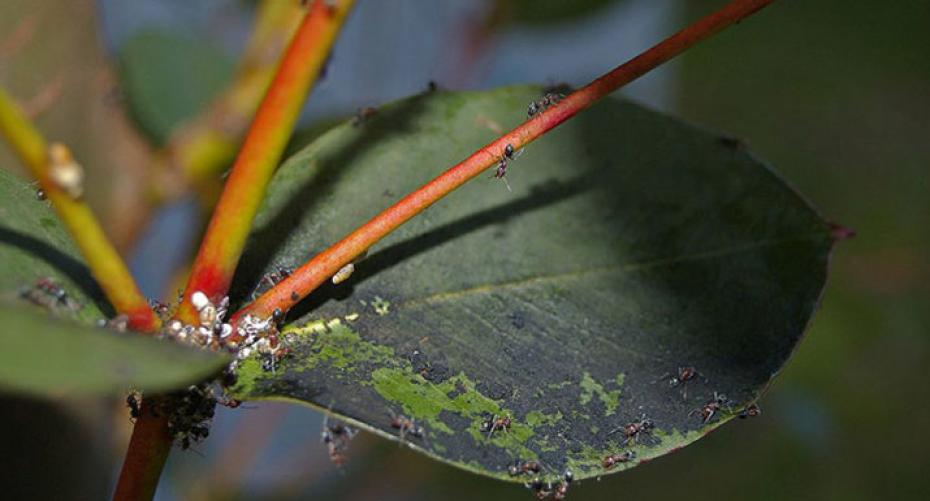This mould can block sunlight and seriously retard plant growth
Image above courtesy of Bidgee
If the leaves of your plants are covered in a black powdery substance which can be rubbed off then you have sooty fungus (mould). More often than not this develops when the plant is infested with insects, usually aphids, scale insects or whitefly. These insects suck the sap from the plant then excrete a sugary substance on which the fungus grows. Plants most commonly affected are evergreen shrubs with shiny leaves, most commonly Azaleas, Camellias, Gardenias, Laurels and Rhododendrons. Sometimes Citrus will exude a sugary substance which also attracts the fungus.
The fungus does not feed directly off the plant but a heavy covering will eventually weaken the plant due to the fact that it blocks out the sunlight which the plant needs in order to photosynthesise and grow. It is most common in a woodland setting where there is high humidity and poor air circulation. The honeydew can also attract ants but these are unlikely to cause any damage to the plant.
Removal methods:
- The best way is to physically wipe it off with a very weak solution of washing-up liquid and tepid water. This solution can also be sprayed but you may have to do this several times for it to be effective.
- You can try blasting it off with a strong jet of water, but obviously not if it would damage the plant.
- Chemical removal can be reasonably effective, you will first need to spray with a systemic insecticide to get rid of the pests and then spray with a fungicide to remove the sooty fungus. If the insects causing the problem are scale insects then spraying with an insecticide may not work as they are usually on the underside of the leaves, so don’t forget to spray underneath. The problem with spraying shrubs with shiny leaves is that it can run straight off before it has time to be taken into the leaf. The undersides of leaves are usually matt so the spray will stick better to this surface. Also if there is a heavy accumulation of fungus the chemical spray may not be able to penetrate onto the leaf. So all in all this is not always necessarily the best method of removal.
- If the accumulation is particularly heavy it may be most effective to prune out the affected branches provided there are enough clean ones to ensure the plant can recover and put out new growth. Burn or put the affected branches into the grey wheelie bin, don't recycle or place on the compost heap as this will only spread the fungus.


